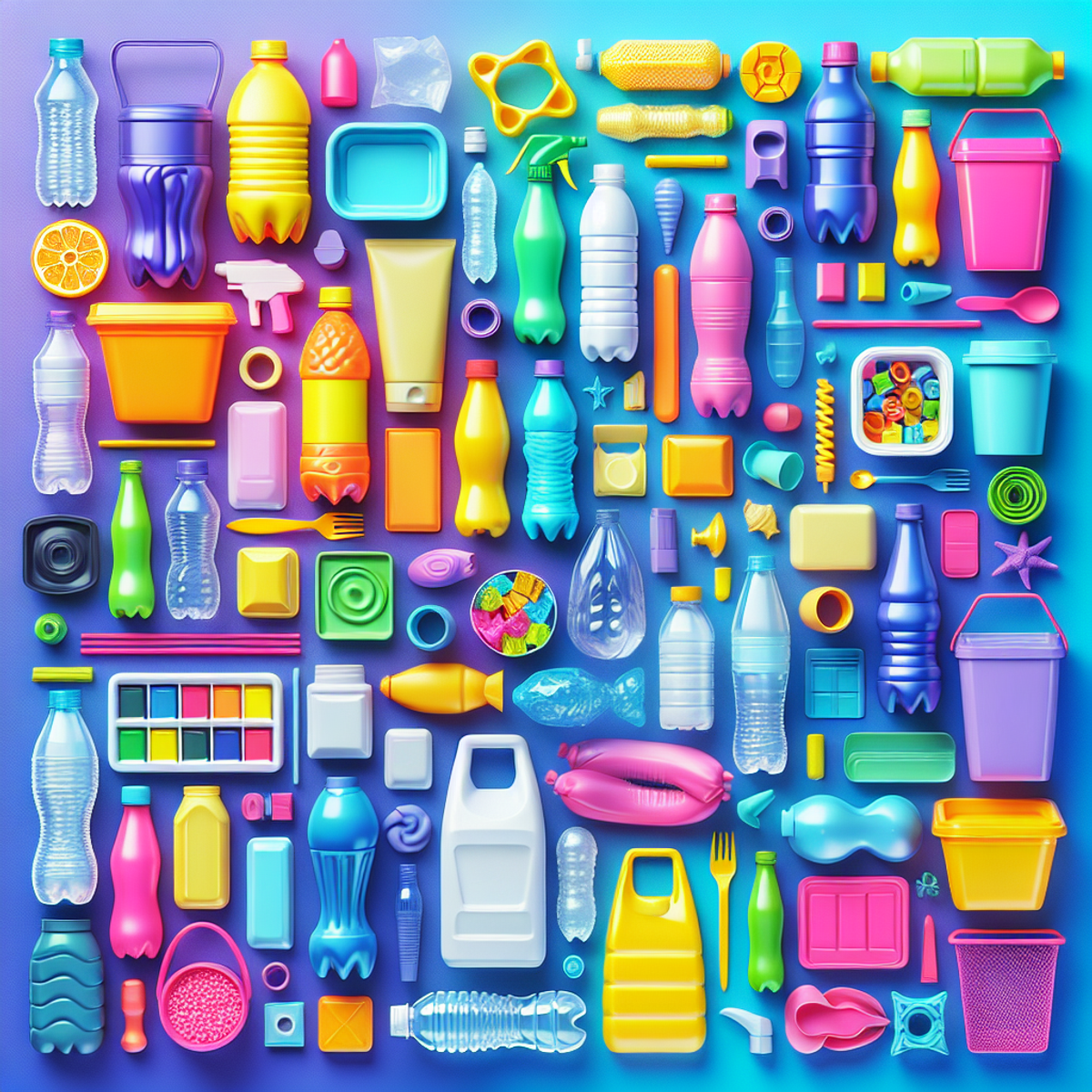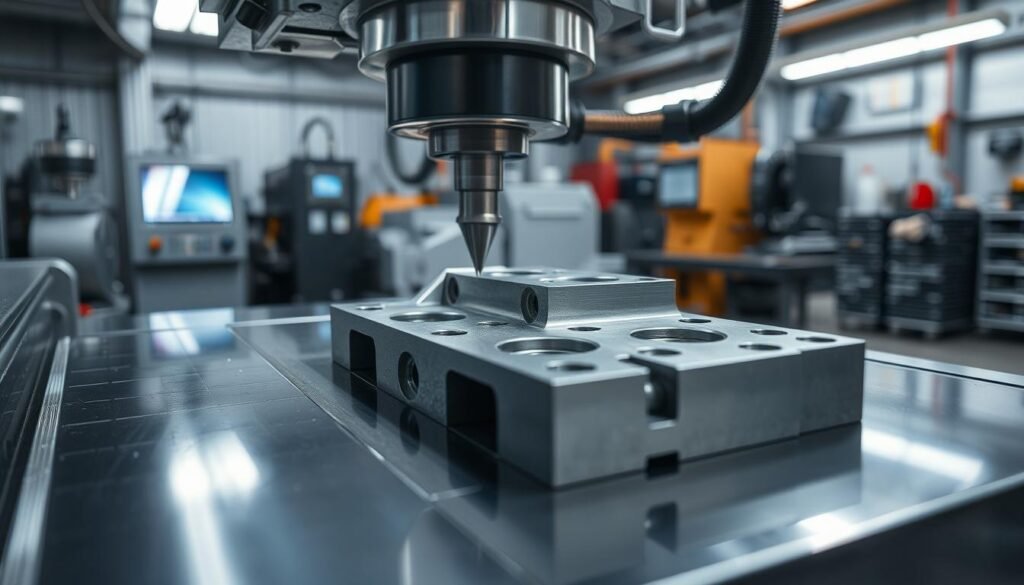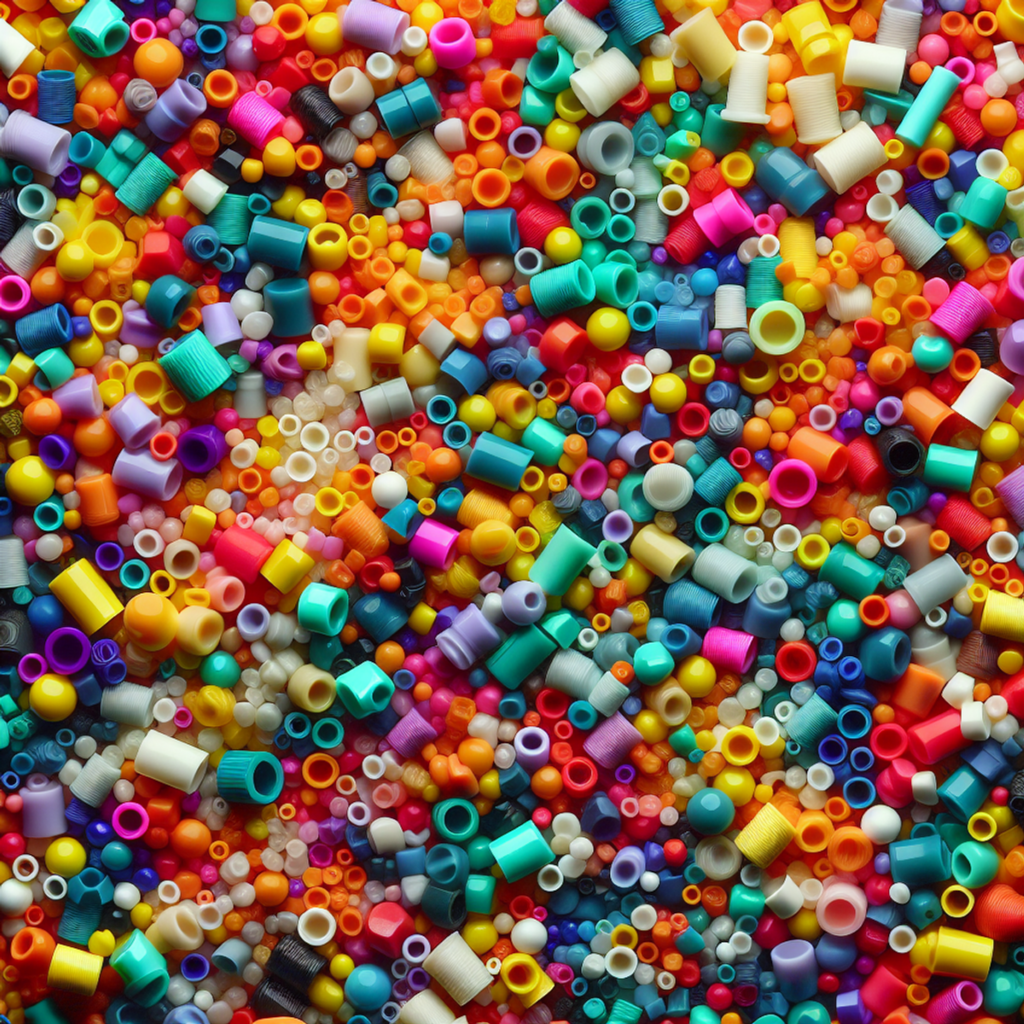Introduction
Plastics play a crucial role in modern society, impacting various industries from healthcare to construction. These versatile synthetic materials are created through the process of polymerization, where small molecules called monomers join to form long chains or networks.
Plastics can be broadly categorized based on their unique properties:
- Thermoplastics: Can be melted and reformed multiple times.
- Thermosetting Polymers: Become irreversibly hard upon heating.
- Amorphous Plastics: Lack a crystalline structure, making them transparent and shatter-resistant.
- Crystalline Plastics: Have highly ordered molecular arrangements, lending strength and rigidity.
The plastic production process begins with the extraction of raw materials such as crude oil or natural gas. These materials undergo refining and cracking to produce monomers, which are then polymerized into various types of plastics. This complex process contributes significantly to environmental issues such as carbon emissions and waste generation. Understanding these aspects helps highlight the importance of sustainable practices in plastic production and management.
1. Understanding the Different Types of Plastics
Thermoplastics and Thermosetting Polymers
Plastics can be primarily classified based on their behavior under heat and pressure into two broad categories: thermoplastics and thermosetting polymers.
Thermoplastics are known for their ability to be melted and reformed multiple times. This property makes them highly versatile and recyclable. Common examples include:
- Polyethylene (PE): Widely used in packaging, containers, and bottles.
- Polypropylene (PP): Found in automotive parts, reusable containers, and textiles.
- Polystyrene (PS): Utilized in disposable cutlery, CD cases, and insulation materials.
These plastics can be reshaped by heating, which allows for ease of processing and extensive use in various industries.
Thermosetting polymers, on the other hand, become permanently hard when heated and molded. They do not melt upon reheating due to their cross-linked structure, making them heat-resistant and dimensionally stable but non-recyclable. Examples include:
- Epoxy resins: Used in adhesives, coatings, and composite materials.
- Phenolic resins: Applied in circuit boards and kitchenware.
Their durability makes them suitable for applications requiring long-term stability under extreme conditions.
Amorphous vs. Crystalline Plastics
Plastics can also be categorized based on their molecular arrangement into amorphous and crystalline types.
Amorphous plastics lack a definite crystalline structure. This characteristic grants them transparency and resistance to shattering. A notable example is:
- Polystyrene (PS): Commonly used for food packaging, disposable cups, and insulation. Despite its utility, it poses environmental concerns due to its non-biodegradable nature and potential health risks associated with styrene exposure.
Crystalline plastics, by contrast, have a highly ordered molecular arrangement that provides strength and rigidity. Polycarbonate (PC) is a prime example:
- Known for its toughness and optical clarity.
- Used in applications like eyewear lenses, compact discs (CDs), and bulletproof glass.
While polycarbonate offers excellent impact resistance and durability, it raises environmental issues related to bisphenol A (BPA) leaching during degradation or disposal stages.
2. Common Types of Plastics: Uses, Properties, and Environmental Considerations
Polyethylene (PE)
Polyethylene is the most widely produced plastic in the world because it is versatile and inexpensive to make. There are different types of polyethylene, each designed for specific uses:
- Low-Density Polyethylene (LDPE): LDPE is thin and flexible, making it ideal for plastic bags, wraps, and squeezable bottles. However, LDPE is difficult to recycle due to contamination issues.
- High-Density Polyethylene (HDPE): HDPE is strong and resistant to impact and heat. It is commonly used in products like milk jugs, detergent bottles, and piping. HDPE can be recycled easily, making it a more sustainable choice.
Polypropylene (PP)
Polypropylene is known for being durable and resistant to chemicals. This makes it a popular material in various industries:
- Packaging: PP is extensively used in food packaging because it creates a moisture barrier.
- Automotive: PP is used to make car parts because of its high temperature resistance.
- Furniture: PP is commonly found in household items like tupperware due to its sturdiness.
The wide range of applications highlights the importance of polypropylene in different sectors.
Polyvinyl Chloride (PVC)
Polyvinyl chloride (PVC) is a versatile plastic that has both benefits and drawbacks. While it plays a crucial role in many areas, there are significant environmental concerns associated with it:
- Construction: PVC is widely used in plumbing pipes, window frames, and flooring due to its durability.
- Healthcare: PVC is essential for medical devices such as IV bags and tubing.
However, the production and incineration of PVC release harmful substances that pose risks to the environment. There are ongoing efforts to phase out or improve the recycling of PVC products, but these challenges continue to exist.
These concerns have prompted organizations such as the San Francisco Environment and Repurpose Global to address the issue of plastic waste and promote sustainable alternatives.
3. Exploring Other Specialized Types of Plastics
Biodegradable Plastics
Biodegradable plastics are designed to break down more quickly than traditional plastics, potentially reducing long-term environmental impact. These plastics can decompose due to the action of microorganisms, making them a promising solution for mitigating plastic pollution. However, challenges persist:
- Proper Disposal: Effective biodegradation often requires specific conditions, such as industrial composting facilities.
- Waste Management: The availability of these facilities is limited, meaning many biodegradable plastics end up in landfills where they may not decompose as intended.
Bioplastics
Derived from renewable sources like cornstarch or vegetable oils, bioplastics offer a more sustainable alternative to conventional plastics. They reduce dependence on fossil fuels and can have a lower carbon footprint. Key points include:
- Advantages:Renewable Resources: Utilizes plant-based materials instead of petroleum.
- Potential for Compostability: Some bioplastics can be composted under the right conditions.
- Limitations:Resource Use: Cultivating crops for bioplastics might compete with food production.
- End-of-Life Options: Not all bioplastics are biodegradable, and their disposal methods vary.
Conductive Polymers
Conductive polymers possess electrical conductivity properties that make them invaluable in electronics. These specialized plastics are used in applications such as:
- Flexible Circuits: Allow for bendable electronic devices.
- Sensors: Used in various types of sensors due to their responsive electrical properties.
Conductive polymers combine the flexibility of plastics with the functionality of metals, opening new possibilities in electronic design and innovation.
The Life Cycle of Plastic: From Making to Disposing
To fully understand the impact of plastic on the environment, it’s important to know how plastic is made and what happens to it after we’re done using it. Here are the different stages in the life cycle of plastic:
1. Getting the Raw Materials
Plastic starts with getting the raw materials, which are mostly fossil fuels like oil and natural gas. These fossil fuels are processed into small units called monomers, which are like the building blocks of plastic.
2. Making the Plastic
The monomers are then chemically joined together in a process called polymerization to create long chains called polymers. There are different methods used to shape these polymers into various products, such as:
- Extrusion: For making items like pipes, tubes, and plastic sheets.
- Injection molding: Used for producing things like bottles, containers, and toys.
- Blow molding: Ideal for creating hollow objects such as bottles and containers.
3. Using the Plastic
Plastic has become an essential part of our lives, with its usage spanning across industries and applications. Its strength, durability, and versatility make it a popular choice for many purposes like:
- Packaging materials for food and consumer goods
- Construction components for buildings and infrastructure
- Parts and components in automotive and transportation
- Electronic devices and appliances
4. Managing the Waste
Unfortunately, not all plastic waste gets properly handled or recycled. There are three main ways in which plastic waste is managed:
- Recycling: Only a small portion of plastic waste actually gets recycled due to challenges like contamination and cost-effectiveness.
- Incineration: Some plastic waste is burned in special facilities called incinerators to generate energy. However, this process also releases harmful gases and pollutants into the air.
- Landfilling: A significant amount of plastic ends up in landfills, where it can take hundreds of years to break down. This contributes to pollution of the soil and water bodies.
“The plastic life cycle involves extracting raw materials, manufacturing the product, using it, and then disposing of it through recycling, incineration, or landfilling.”
Environmental Impact at Each Stage
At each stage of the plastic life cycle, there are environmental consequences that need to be addressed:
- Carbon Emissions: The production and disposal of plastic contribute to greenhouse gas emissions, which are a major driver of climate change.
- Energy Usage: Making plastic requires a significant amount of energy, mainly from fossil fuels. This further depletes our finite resources and adds to the carbon footprint.
- Waste Generation: Improper management of plastic waste leads to pollution in our oceans, rivers, and landscapes. It poses a threat to wildlife and ecosystems, causing harm through ingestion and entanglement.
Extended Producer Responsibility (EPR)
To tackle these issues, many countries and organizations have implemented Extended Producer Responsibility (EPR) programs. The goal of these programs is to make manufacturers more accountable for the environmental impact of their products throughout their life cycle.
EPR programs encourage manufacturers to:
- Design products that are easier to recycle or made from recycled materials
- Take back used products for proper disposal or recycling
- Support recycling initiatives and invest in infrastructure
By shifting some responsibility onto the producers, EPR programs aim to reduce the overall environmental impact associated with plastic production worldwide.
Addressing the Plastic Pollution Crisis: Policies, Innovations, and Individual Actions
The urgent need to tackle the growing problem of plastic pollution is undeniable, especially given its devastating impact on marine life and ecosystems. Marine pollution caused by plastic waste is a critical environmental issue that demands immediate attention.
Effective Policy Measures
Various policy measures have been implemented worldwide to combat plastic waste:
- Plastic Bag Bans: Many countries have introduced bans on single-use plastic bags to reduce the volume of plastic entering landfills and oceans.
- Extended Producer Responsibility (EPR) Laws: These laws hold manufacturers accountable for the entire lifecycle of their products, encouraging them to design more sustainable packaging and take back used products for recycling.
- Deposit Return Systems: Beverage containers can be returned for a refund, incentivizing consumers to recycle rather than discard them.
Innovative Technologies and Initiatives
Emerging technologies and initiatives are making strides in cleaning up existing plastic pollution:
- Advanced Filtration Systems: These systems are deployed in rivers and oceans to capture microplastics before they disperse further into the environment.
- Autonomous Drones: These drones are designed to collect floating debris from water bodies efficiently, reducing the human effort required for cleanup.
Individual Actions for a Circular Economy
You can contribute to minimizing plastic consumption through simple daily practices:
- Use reusable shopping bags instead of single-use plastics.
- Opt for reusable water bottles and food containers.
- Participate in local clean-up drives or support organizations working towards ocean conservation.
By integrating these practices into your lifestyle, you not only reduce your personal plastic footprint but also promote a circular economy approach that prioritizes reuse and recycling of materials.
Conclusion
It is important to understand the different types of plastics that we come across in our daily lives. Each type has its own characteristics and uses that make them popular. However, their impact on the environment means that we need to take comprehensive steps to address this issue.
Being aware of the latest advancements in plastic recycling technologies can help us improve our waste management strategies. Showing support for laws and regulations aimed at reducing plastic pollution will also play a significant role in creating a better future.
Here are some actions that you can take:
- Stay Informed: Keep yourself updated with the latest developments in plastic recycling.
- Support Legislation: Speak up for laws that promote sustainable use of plastics.
- Personal Actions: Try to reduce, reuse, and recycle plastics as much as you can.
By incorporating these habits into our daily routines, we are making a positive contribution towards a greener planet and a more sustainable future.
FAQs (Frequently Asked Questions)
What are plastics and why are they important in modern society?
Plastics are a group of versatile synthetic materials that are created through the process of polymerization. They are important in modern society due to their widespread use in various industries, offering unique properties that make them suitable for different applications.
What are the primary classifications of plastics based on their behavior under heat and pressure?
The primary classifications of plastics based on their behavior under heat and pressure include thermoplastics and thermosetting polymers.
What is the significance of polyethylene in the plastic industry?
Polyethylene is the most widely produced plastic globally due to its versatility, low cost, and various forms such as LDPE and HDPE, each with specific applications and recycling challenges.
What are biodegradable plastics and what role do they play in mitigating plastic pollution?
Biodegradable plastics have the potential to mitigate plastic pollution by breaking down naturally. However, challenges remain in terms of proper disposal and industrial-scale composting facilities.
How can individuals minimize plastic consumption in their daily lives?
Individuals can minimize plastic consumption in their daily lives by adopting practices like using reusable shopping bags, water bottles, and food containers to promote a circular economy approach.
Why is it important to stay informed about new developments in plastic recycling technologies?
It is important to stay informed about new developments in plastic recycling technologies to support legislative efforts aimed at promoting a more sustainable future for plastics.






